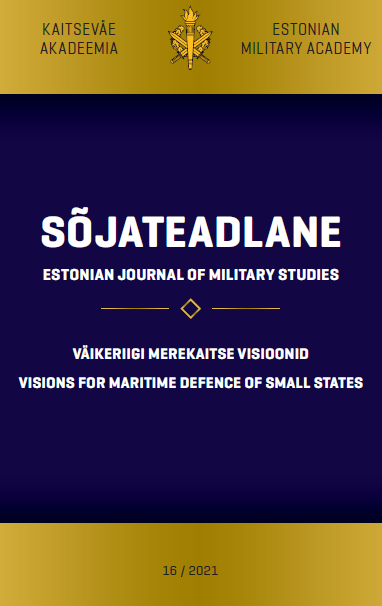RANNIKUVÕIM: RANNIKURIIGI MEREVÕIM JA MERELISTE RESSURSSIDE HALDAMINE
COASTAL POWER: THE SEA POWER OF THE COASTAL STATE AND THE MANAGEMENT OF MARITIME RESOURCES
Author(s): Jacob BørresenSubject(s): Security and defense, Military policy, Peace and Conflict Studies
Published by: Kaitseväe Akadeemia (KVA)
Keywords: Sea power; Coastal state and power; Management; Maritime resources; Norwegian Navy;
Summary/Abstract: This article will present a theory of the sea power of the coastal state – or what one might call coastal power – and in that context discuss the preconditions for and the limits to the ability of the coastal state to protect and defend itself and the resources in its Exclusive Economic Zone [EEZ] and on its continental shelf. Finally, the theory will be applied to the role and mission of the Royal Norwegian Navy (RNoN). The basis for this theory is not an analysis of navies of over 100 coastal states that has helped to identify their common denominators. The theory of coastal power is, therefore, not primarily descriptive, although it contains descriptive passages. On the contrary, it has a clearly prescriptive or normative bias. Using the experiences of the Norwegian Navy as an example, the coastal theory suggests ways how a small state with an ocean coastline can perceive sea power and apply naval forces to increase their freedom of action and, thus, develop and protect their interests. Evidently, the coastal power theory could apply to all coastal states. The order of battle, the doctrine, and the concept of operations of each individual coastal navy can, of course, greatly vary in terms of their specific role and tasks, but this concerns the particular characteristics of individual coastal states and challenges to their security.
Journal: Sõjateadlane
- Issue Year: 2021
- Issue No: 16
- Page Range: 159-188
- Page Count: 30
- Language: Estonian

